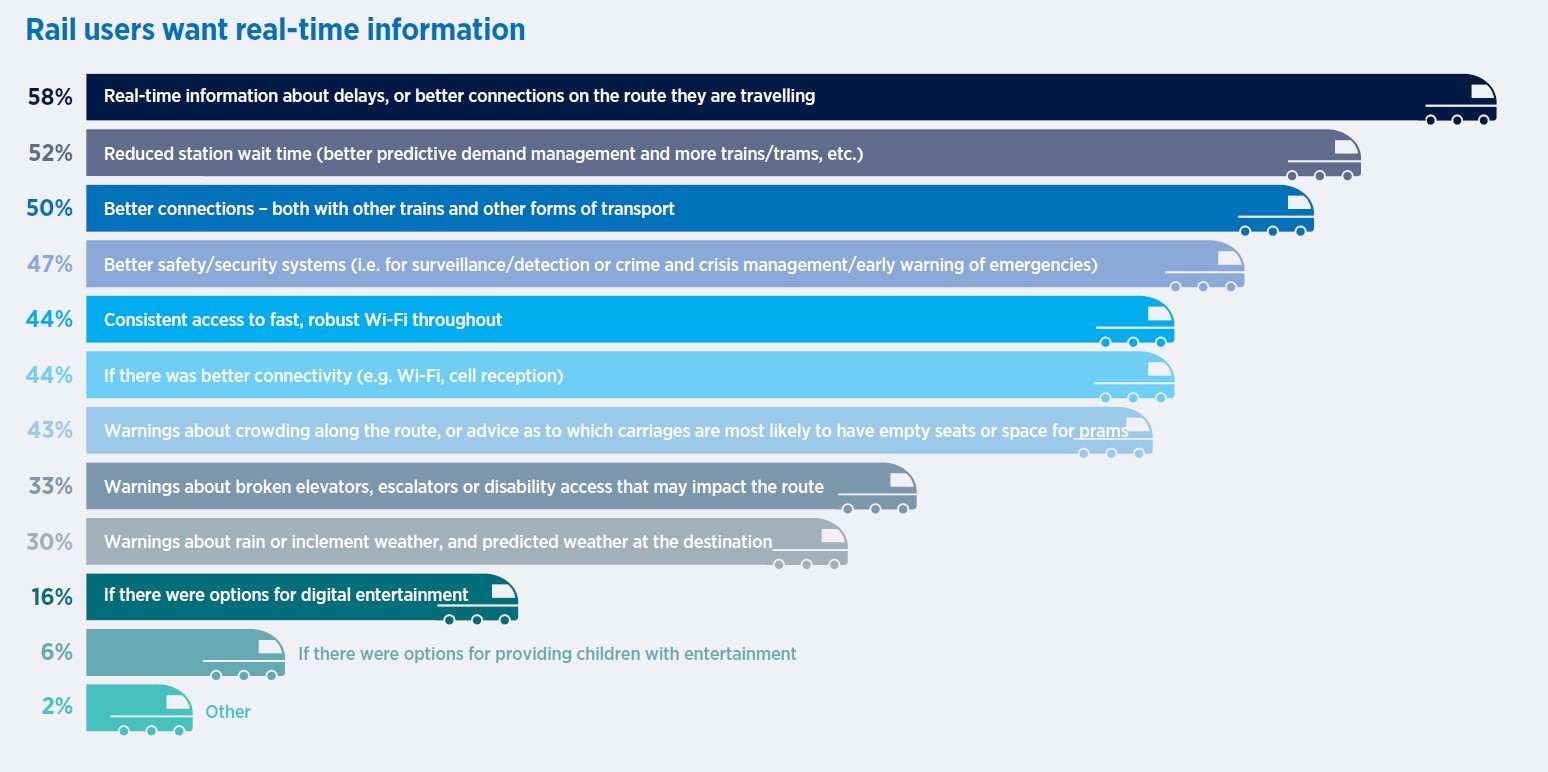Public transport is integral to a city’s prosperity and its citizens’ wellbeing. Besides providing the infrastructure to get people from point A to B, transport operators are responding to citizens’ needs to remain connected and productive on public transport, especially longer journeys, and to travel in a safe environment, which has become even more important since the COVID-19 pandemic.
BAI Communications surveyed more than 2,400 rail users in five major cities where it operates: Hong Kong, London, New York City, Sydney, and Toronto. Respondents were asked how they saw the state of transport, connectivity, and its role in their city’s future. The data revealed widespread support for investment in 5G networks and smart city services to boost rail users’ safety and connectivity.
This research was conducted in the early stages of the COVID-19 pandemic; thus, the findings offer valuable insights to transport operators and authorities grappling with its ongoing social and economic effects. As economies adjust and populations navigate the return to work and life, public transport will be a focus and key consideration for governments and citizens of major cities.
The report is designed to help authorities understand the changing needs of rail users and services they find valuable:
- There is widespread support and growing demand among rail users for transport authorities and operators to invest in 5G networks to enable smart city services that help them stay safe and connected.
- Rail users are eager for transport authorities to adopt connectivity solutions to enhance transport offerings.
- Advanced mobile networks and smart technology is critical to restoring trust in public transport in the post-pandemic world. Data shows that the benefits of advanced communications infrastructure, such as personalised services, smart and connected public spaces, and responsive public transport are critical to innovation, opportunity, and wellbeing.
One of the report’s key findings is that rail users want a smarter and safer travel experience (ref. chart) – IoT solutions give transit operators the means to deliver this by creating the station of the future. The Toronto Transit Commission (TTC) has partnered with BAI to implement a data analytics solution (developed by BAI) that provides insights into foot traffic at stations and crowding conditions throughout the system. The greater the TTC’s ability is to analyse, understand and act on data related to passenger flow, the more effectively it can meet customers’ needs.

In a growing city like Toronto, innovative IoT applications and robust connectivity will become increasingly relied upon. While BAI’s focus is modernising the city’s transit ecosystem, it is proud to play a part in Toronto’s smart city evolution.
As applications that can ingest and analyse vast amounts of data in real time develop, they need infrastructure capable of supporting them – and that infrastructure relies on 5G connectivity. BAI’s established networks are built with the future in mind and can therefore support mobile network, transit, and public service operators with 5G rollouts. BAI is also developing 5G neutral host offerings to leverage the growth opportunities in cities where it already does business with authorities.
BAI’s neutral host solutions and reliable network infrastructure make it possible for authorities to unlock economic and social benefits for cities and citizens. Through its network services, BAI processes a huge amount of powerful anonymised data and by harnessing the cababilities of AI, machine learning, IoT, and the corresponding analytics BAI can improve business processes and services.
Advanced mobile networks and smart technology will be critical in restoring trust in public transport use in the post-pandemic world. Read more in the 2020 Connectivity outlook report, BAI’s second annual benchmarking report. Read the 2019 findings here.
The post Transport and connectivity: smarter infrastructure for a smarter city appeared first on RCR Wireless News.
